Seeing as how this is the true beginning of my summer blog rush, I think it’s only fitting to start with my first team game at the Guildhall: Polaris. When our small three-person team started brainstorming together, we decided that we were either going to make a game that told an emotionally evocative story or one that pushed the boundaries of the absurd. We didn’t end up making a game about a great white shark with chainsaws for arms who chased a salmon sheriff through the cosmos in his dinosaur-shaped spaceship, but we did make one about a parent’s sacrificial mission to rescue a baby bear of the night sky.
We wanted Polaris to be fun, but we also wanted it to be an experience. We wanted people to play through it, enjoy the mechanics and challenges of the game, and maybe think a little about their own relationships in the end. We enjoyed varying degrees of success with those lofty goals, but regardless, it was an experience that taught me much about leadership and design.
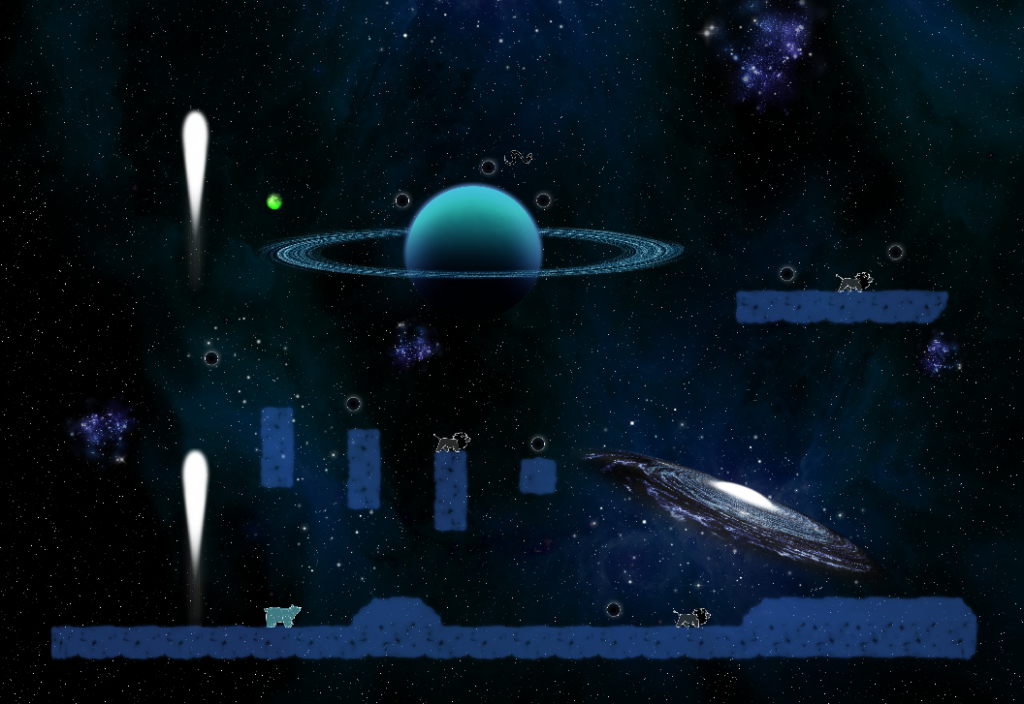
The first level introduces most of the main mechanics in a fairly short period of time; players must run, jump, walk on planets, ride on comets, and fight simple enemies to relight the constellation
What Went Right
Dedicated and Open Team
Regardless of what happened with the game, the team environment was happy and productive. We all wanted an open environment from the very beginning. One of the ways we did this was through a transparent feedback mechanism. As part of the Guildhall’s curriculum, we took part in an anonymous peer evaluation system once per milestone during our team project. This was a valuable way to elicit relatively unfiltered feedback, but our short development cycle meant we couldn’t wait weeks to resolve potential conflicts.
To help catch any problems, we set aside time every week where the team would discuss any issues that had come up over the past week. It’s not a system that I would recommend for everyone, but it’s one that was absolutely necessary for our team; our small team size meant we couldn’t avoid each other, even if there was a problem. This system was largely responsible for our happy team environment, and it ended up being so successful that we were able to easily integrate an additional member into the team midway through production without complication.
Emotionally Resonant Game
We thought we had something special with Polaris when several testers approached us during the school-wide public playtest and told us how ours was their favorite game. We knew it was special when people wouldn’t stop playing our game during the Guildhall’s public exhibition. We had created a game that resonated with people on a deeper level.
This all-important component of the game was successful because of three things: the music, the art, and the story. I was able to secure limited rights to use copyrighted music that fit the game’s theme, and this did wonders to draw players into the world (much more than generic ambient music would have). In addition,Jenni Homonko’s beautiful art was immediately captivating, and we were able to use it to make the world feel alive and the characters seem relatable. Finally, I designed the story so that people could find themselves in it. For example, I was adamant that the main character, Arcas, never be given a gender. Sure, this made it more difficult to write the story and the documentation, but I wanted Arcas to be something that all players could relate to. I related to Arcas as a parent who would do anything for his child, and others saw in the great bear loved ones who had sacrificed for them.
Strong Theme
The elements that made the game what it is would have meant little without a consistent theme to tie them together. Thankfully, the mythology of the constellations provided us with a deep well of lore that we drew inspiration from at every turn, using it for everything from the story to the UI to the actual level construction. For example, I designed every level in the game around an existing constellation. This provided useful constraints for my level design, but it also had the added benefit of making the universe of the game seem that much more believable and familiar.
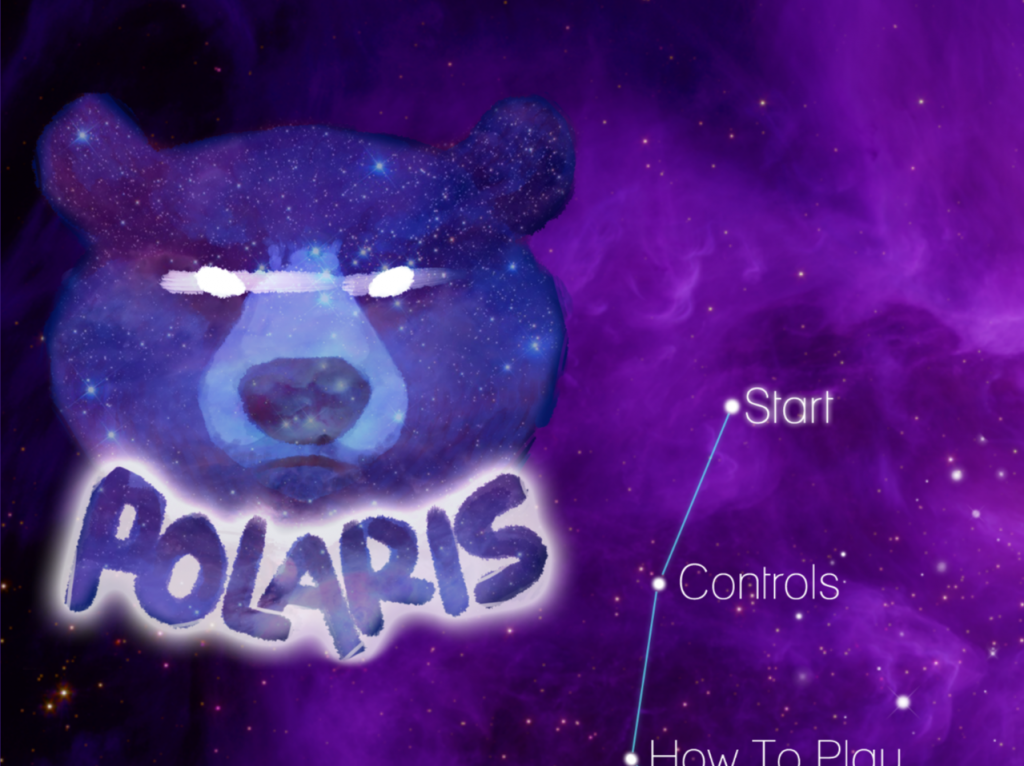
The main menu shifts its focus along the different stars in the Ursa Minor constellation, the same constellation we used as the base for Polaris’ body
What Went Wrong
Show, don’t Tell
Story was an integral part of Polaris, and we didn’t realize until relatively late in the development cycle how much of it we would need to add context and meaning to the game. Consequently, we defaulted to screens with large blocks of text that players had to read through to gain any understanding of what was happening. We were able to make the screens pretty and even add some dynamic elements to them, but they were still blocks of text. Our story didn’t take any advantage of the inherent interactivity of the medium, and it certainly didn’t incorporate any environmental storytelling elements. Looking back, it’s clear the game would have benefited from a Braid-like narrative structure where players lit a star and received a snippet of story in exchange. This would have been a less invasive way of telling our story, and players could have enjoyed as much or as little of it as they wanted.
We also had plans for a narrative mechanic where a player’s maximum health would decrease from level to level (as the main character sacrificed life to bring back the darkened constellations), but we weren’t able to explain it without more text and more tutorials—people just saw they were losing health and didn’t know why. Having a workable mechanic like this and a non-invasive story would have done much to broaden the appeal of the game.
Mixed Audiences
Then again, Polaris sometimes suffered from being too broad in some ways. When we started off, we originally wanted to make a game that would appeal to non-traditional gamers by having approachable platforming and combat. Unfortunately, we lost this focus midway through when we started on the level design. Few people had problems with the first level, but the second ramped up the difficulty too fast. I wanted to make an interesting and difficult level, but I failed to consider our target audience. As a result, some testers quit during the second level. If I had remembered our audience, I would have made the second level moderately more difficult than the first, and then increased the challenge further in the third level, though perhaps still not as difficult as the current second level.
Engine Woes
Polaris was also plagued by technical woes, mostly as a result of using an outdated version of Torque 2D. The Guildhall required us to use the buggy engine, and although it was an invaluable learning experience, it also created a slew of problems. To name a few, adding sound of any kind precluded us from making further changes to the level, the engine would somehow corrupt several weeks back into our version control, any class changes (e.g., changes to the main character’s stats) were level specific and had to be changed per level, etc. None of these were disastrous, but all of them combined made for dozens of hours of lost time, time that could have been spent creating additional content. It demonstrated to me how important good tech can be to a company and how even the best teams can be sidetracked by faulty software.
Scheduling Naivety
Because this was my first game as team lead, I committed many of the classic leadership mistakes, but one of the worst was an overly optimistic schedule. I crammed a whole lot into every milestone (some of which didn’t need to be there), and it led to several bad late nights for the team. I also pushed some critical game mechanics toward the end of the development cycle, which led to a lot of rework for me and prohibited us from making as many levels as we originally planned. Moreover, I didn’t allot any time to polish. So aside from the changes we made for playtesting, almost everything in the game was a first pass.
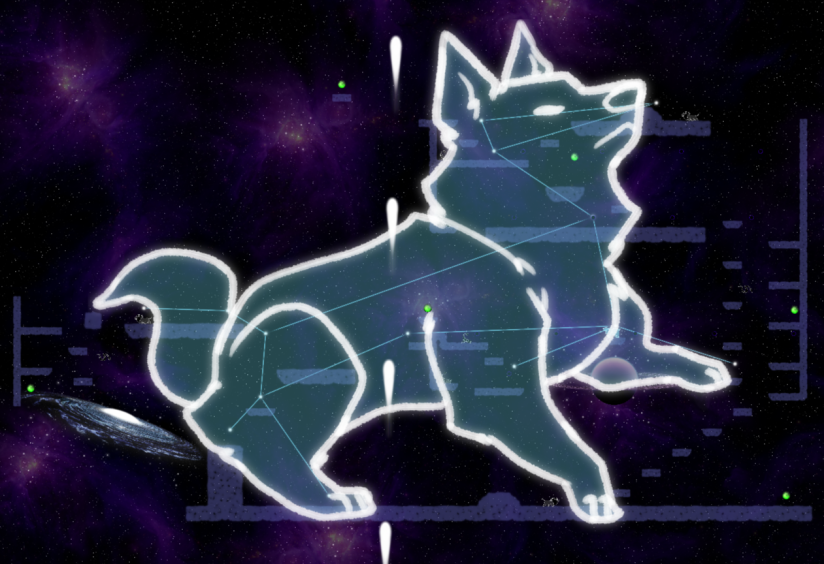
We based the second level on the Canis Major constellation, and we apparently used Battletoads as inspiration for its difficulty
Summary
I’ve started many games over the course of the years, one as early as when I was 12-years-old, but Polaris was the first game I ever completed. It definitely had its problems, and almost a year later I can now see a plethora of ways in which we could have improved. However, I’m still very proud of the product we created, and the experience of actually making a game taught me more than all of the design docs and crazy unfulfilled ideas of my past ever did. And if only for that reason, I considerPolaris a success.
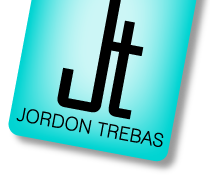
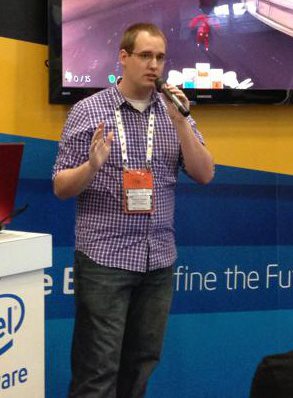 I'm a game designer with years of industry experience and a master's degree in design who's worked on AAA games, indie darlings, and free-to-play products.I love using my design and scripting experience to create awesome products, especially when it means working alongside a passionate dev team.Take a look around at some of my work, and please don't hesitate to reach out if you have any questions or opportunities!
I'm a game designer with years of industry experience and a master's degree in design who's worked on AAA games, indie darlings, and free-to-play products.I love using my design and scripting experience to create awesome products, especially when it means working alongside a passionate dev team.Take a look around at some of my work, and please don't hesitate to reach out if you have any questions or opportunities!